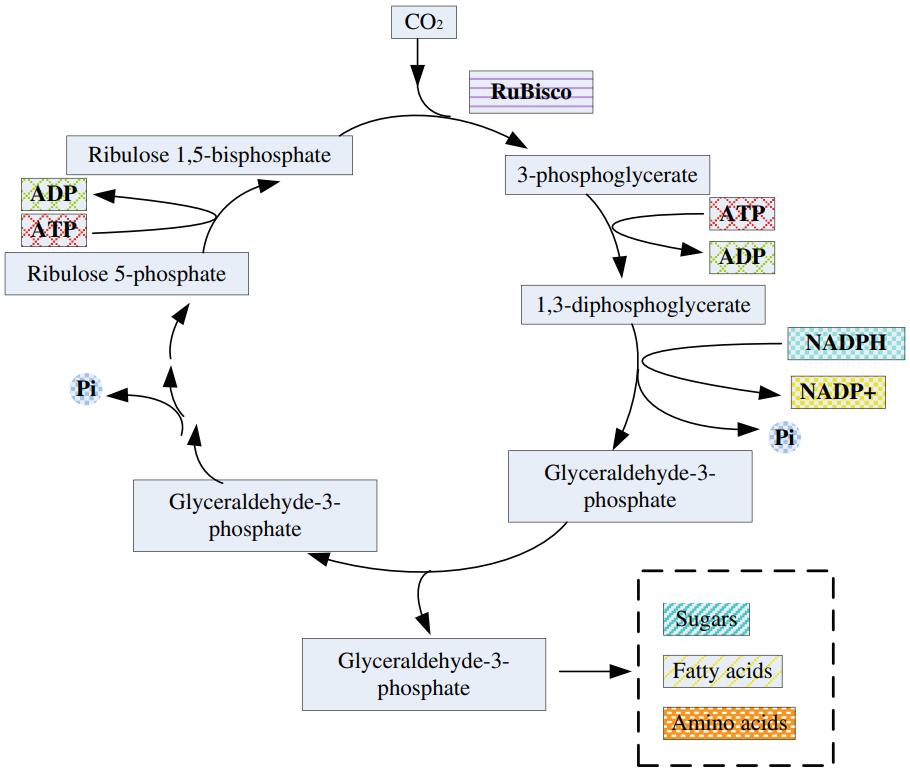Atmospheric Pollution Treatment by Algae
Gaseous wastes comprise a large group of atmospheric pollutants produced mainly due to human activities. The main component of flue gas is CO2, with an average content of 10-25%. Furthermore, flue gases include other greenhouse gases such as methane and chlorofluorocarbons (CFCs), in addition to nitrogen oxides (NOx), sulfur oxides, and carbon monoxide.
Harmful Effects of Flue Gas on the Environment
The dramatic increase in flue gas emissions is contributing to global warming, environmental pollution, and climate change. In addition, flue gas emissions have other negative impacts on the environment, such as atmospheric pollution, acid rain, and a host of other health problems.

Microalgae for Atmospheric Pollution Treatment
Flue gas contains many different environmentally harmful components, including oxides of carbon, nitrogen, and sulfur, as well as heavy metals. Algae can absorb these four types of substances. One of the most significant effects of algae is the fixation of carbon dioxide in the fuel gas.
- Microalgae for Carbon Capture from Flue Gas
Algae is considered an excellent biomaterial for sequestering CO2 from flue gas because of its potential to be environmentally friendly and sustainable. In addition, there are other advantages of using algae for CO2 fixation. Algae have high photosynthetic efficiency, preceding terrestrial plants. Microalgae are not only considered as potential biological material for mitigating CO2 emissions but also as an ideal carrier of energy. In algae, the conversions of CO2 into energy reserve substances such as lipids, carbohydrates, and proteins are a promising method for CO2 fixation from flue gas.
 Fig.1 Overview of the Calvin cycle pathway in algae. (Huang, G., et al., 2016, Applied biochemistry and biotechnology)
Fig.1 Overview of the Calvin cycle pathway in algae. (Huang, G., et al., 2016, Applied biochemistry and biotechnology)
- Factors Affecting Carbon Capture from Flue Gas
However, there are some unavoidable problems that inhibit the large-scale cultivation of microalgae and the capture of CO2 from flue gas, which include high CO2 concentration, sulfur and nitrogen oxides, heavy metals, pH value, and high temperature. Nevertheless, there are some specific algae strains that can tolerate the harsh conditions mentioned above. For instance, Chlorella sp. and Spirulina sp. can grow well at high CO2 concentrations of 5-20 % (v/v).
Screening Method for Algae Used to Treat Flue Gas
Even with the many factors mentioned above that affect algae treatment of flue gases, there are still many ways to successfully convert laboratory microalgae cultivation to an industrial scale, such as excellent microalgae strains that can be collected from natural screening and genetic engineering experiments. Microalgae isolated from areas near cogeneration plants may be more tolerant to flue gas than other native species. For instance, Scenedesmus obliquus and Chlorella kessleri isolated from ponds near cogeneration plants can grow well at 18% (v/v) CO2. In addition, random mutation and genetic engineering approaches are potential techniques to improve photosynthetic efficiency and CO2 fixation efficiency.
Our Services
As a pioneer in algae research, Lifeasible has the professional equipment and experienced teams to provide high-quality algae isolation and culture services, algae engineering services, algae analysis services, algae genetic screening services, algae-based production services, algae monitoring services, algae treatment services, and algae-based biosensor services for environmental monitoring. Please contact us for more information.
Reference
- Huang, G., Chen, F., Kuang, Y., He, H., & Qin, A. (2016). Current techniques of growing algae using flue gas from exhaust gas industry: a review. Applied biochemistry and biotechnology, 178(6), 1220-1238.
Our services are for research use only and not for any clinical use.